01
Aug
Suburban Bees Still Vulnerable to Neonicotinoids Despite EU Ban
 (Beyond Pesticides, August 1, 2018) According to new research from the University of Sussex, bees living in suburban habitats are still being exposed to high levels of neonicotinoid pesticides. Even though there is a European Union (EU) ban on these chemicals, the ban focuses on agricultural and not residential applications. The studyâs authors are urging gardeners to forgo the use of these pesticides in favor of more holistic, pesticide-free approaches.
(Beyond Pesticides, August 1, 2018) According to new research from the University of Sussex, bees living in suburban habitats are still being exposed to high levels of neonicotinoid pesticides. Even though there is a European Union (EU) ban on these chemicals, the ban focuses on agricultural and not residential applications. The studyâs authors are urging gardeners to forgo the use of these pesticides in favor of more holistic, pesticide-free approaches.
The authors of the study say it is the first of its kind to highlight the risk to bees in urban areas posed by garden use of pesticides. Entitled Monitoring neonicotinoid exposure for bees in rural and peri-urban areas of the UK during the transition from pre- to post-moratorium, the study sampled pollen and nectar from bumblebee colonies in rural and peri-urban habitats in three UK regionsâStirlingshire, Hertfordshire, and Sussex over three years. Sampling began prior to the ban (2013), during the initial implementation when some seed-treated winter-sown oilseed rape was still grown (2014), and following the ban (2015). Honey bee colonies in rural habitats were also sampled to compare species-level differences between bumblebees and honey bees.
Not surprisingly, the researchers find pesticide contamination in more than 50 percent of the samples, with thiamethoxam detected at the highest concentration in honey bee and bumblebee-collected pollen and nectar. For the 2014 sample period, honey bees were exposed to higher levels of neonicotinoids than bumblebees. Imidacloprid and thiacloprid were also found in samples. Check out the Seeds that Poison video.
Results found that, in general, neonicotinoid exposure for rural (typically agricultural areas) bees declined post-ban (2015), but that bees in suburban environments remain at risk of high levels of neonicotinoid exposures. For imidacloprid, the researchers believe that continued contamination could also be due to pet flea treatments, which still often contain this chemical. In addition to pesticide garden products, contaminated ornamental plants sold in garden centers play a key role in spreading neonicotinoids through suburban areas, the researchers note. A previous study, also at the University of Sussex, revealed that 70% of bee-friendly plants sold at a range of garden centers had traces of neonicotinoids. Researchers are now urging suburban gardeners to get rid of their bug sprays immediately in favor of encouraging natural predators like ladybirds or lacewings, and the use of physical methods such as hand-removal of pests, and netting or sticky traps.
“Our findings suggest that the EU’s recent decision to extend the neonicotinoid moratorium to include all field crops is likely to have a positive effect on bees, relieving some of the stress on our already struggling pollinator populations. However, given that bees in suburban gardens appear to remain at risk post-moratorium, further work is needed to understand the sources of neonicotinoid exposure in these areas and to find ways to reduce it. Our study indicates that limiting the public sale and use of neonicotinoid-based bug sprays, which are currently unaffected by the moratorium, is needed if we are to protect bee populations living in and around our towns and cities,” said Beth Nicholls, PhD, postdoctoral research fellow in evolution, behaviour and environment at the University of Sussex and the study’s lead author.
In 2013, the European Commission instituted an EU-wide moratorium on the use of three types of neonicotinoid (thiamethoxam, clothianidin, and imidacloprid) on bee-attractive flowering crops, such as oilseed rape. The ban will be expanded to include all field crops in 2019. According to the European Commission, protection of bees is an important issue, since it concerns biodiversity, food production, and the environment. An EU committee approved the plan to tighten and expand restrictions on the use of the neonicotinoid pesticides, acting upon scientific advice this past February from the European Food Safety Authority (EFSA) to tighten existing restrictions and protect bees, crucial pollinators. EFSA analyzed over 1,500 studies from academia, beekeeper associations, chemical companies, farmer groups, non-governmental organizations, and national regulators, and concluded that neonicotinoids pose risks to honey bees and wild pollinators.
The U.S. Environmental Protection Agency (EPA) is currently reviewing public comments on its preliminary ecological and human health risk assessments for the neonicotinoids clothianidin, thiamethoxam and dinotefuran, and a preliminary ecological risk assessment for the neonicotinoid imidacloprid. EPAâs risk assessments find deadly impacts to birds from neonicotinoid-treated seeds, poisoned insect prey, and contaminated grasses. Researchers have found that tiny amounts of neonicotinoids are enough to cause migrating songbirds to lose their sense of direction. A recent study by U.S. Geological Survey (USGS) researchers found neonicotinoids widespread in the Great Lakes at levels that harm aquatic insects, and potentially the aquatic food webâthe foundation of healthy aquatic ecosystems.
One recent study finds that bumblebee queens that wake up from hibernation to a neonicotinoid-contaminated, monofloral landscape take longer to set up their nest and die-off at higher rates. Previous studies have indeed found neonicotinoids to be associated with altered feeding behaviors and reduced egg development in bumblebee queens, as well as the inhibition of pollination skills among bumblebee workers, the loss of bumblebeesâ characteristic âbuzzâ pollination technique, and reductions in overall colony size. For more, visit the What the Science Shows page.
Take Action: Urge your U.S. Representative to support the Saving Americaâs Pollinators Act. With managed honey bee losses remaining at unsustainable levels and many wild pollinators at risk of extinction, itâs time, for the future of food and our environment, for the U.S. to finally protect pollinators.
All unattributed positions and opinions in this piece are those of Beyond Pesticides.
Source: Science Daily









 (Beyond Pesticides, July 31, 2018) P-55, a mountain lion, famous for crossing Southern Californiaâs notorious 101 Freeway, has died of causes biologists suspect are related to rodenticide poisoning, according to the
(Beyond Pesticides, July 31, 2018) P-55, a mountain lion, famous for crossing Southern Californiaâs notorious 101 Freeway, has died of causes biologists suspect are related to rodenticide poisoning, according to the  (Beyond Pesticides, July 30, 2018)Â In place of open debate, Congressional Republicans have once again used riders in three must-pass funding and authorization bills to remove protection from endangered species. It adds up to a huge attack on an immensely popular law. From wolves and grizzly bears to monarchs and burying beetlehttps://action.beyondpesticides.org/p/dia/action4/common/public/?action_KEY=26387s, everyone is at risk.
(Beyond Pesticides, July 30, 2018) In place of open debate, Congressional Republicans have once again used riders in three must-pass funding and authorization bills to remove protection from endangered species. It adds up to a huge attack on an immensely popular law. From wolves and grizzly bears to monarchs and burying beetlehttps://action.beyondpesticides.org/p/dia/action4/common/public/?action_KEY=26387s, everyone is at risk. (Beyond Pesticides, July 27, 2018) The American Academy of Pediatrics (AAP) has issued new guidelines for measures to lower childrenâs exposures to chemicals in food and food packaging that are tied to health problems such as obesity, metabolic changes, decreased birth weight, and endocrine disrupting effects, including reduced fertility. Exposures to these chemicalsâadded to food during processing or in food packagingâare disproportionately high among minority and low-income populations, according to the report, especially given inadequate federal regulation and oversight.
(Beyond Pesticides, July 27, 2018) The American Academy of Pediatrics (AAP) has issued new guidelines for measures to lower childrenâs exposures to chemicals in food and food packaging that are tied to health problems such as obesity, metabolic changes, decreased birth weight, and endocrine disrupting effects, including reduced fertility. Exposures to these chemicalsâadded to food during processing or in food packagingâare disproportionately high among minority and low-income populations, according to the report, especially given inadequate federal regulation and oversight. (Beyond Pesticides, July 26, 2018) A
(Beyond Pesticides, July 26, 2018) A  (Beyond Pesticides, July 25, 2018) The Village of Franklin Park has become the third and latest community in the state of Illinois to
(Beyond Pesticides, July 25, 2018) The Village of Franklin Park has become the third and latest community in the state of Illinois to  (Beyond Pesticides, July 24, 2018) The White House named Scott Hutchins, PhD, former Dow Chemical Company executive, as Undersecretary of Agriculture for Research, Education and Economics for the U.S. Department of Agriculture (USDA). Dr. Hutchins is now the third Dow alumnus to be hired by the Trump Administration. As a scientist who oversaw Dowâs pesticide research and development, his appointment, if confirmed, has troubling consequences to USDAâs research programs.
(Beyond Pesticides, July 24, 2018) The White House named Scott Hutchins, PhD, former Dow Chemical Company executive, as Undersecretary of Agriculture for Research, Education and Economics for the U.S. Department of Agriculture (USDA). Dr. Hutchins is now the third Dow alumnus to be hired by the Trump Administration. As a scientist who oversaw Dowâs pesticide research and development, his appointment, if confirmed, has troubling consequences to USDAâs research programs.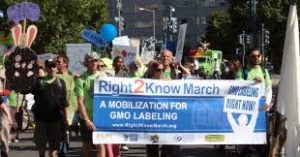 (Beyond Pesticides, July 23, 2018) Whole Foods Quietly Put Its Comprehensive GMO Labeling Policy on Hold. As
(Beyond Pesticides, July 23, 2018) Whole Foods Quietly Put Its Comprehensive GMO Labeling Policy on Hold. As  (Beyond Pesticides, July 20, 2018)Â Algae are elemental to life on Earth as generators of most of the planetâs oxygen and as food for myriad organisms. In the food chain, as in all systems, balance is key;
(Beyond Pesticides, July 20, 2018)Â Algae are elemental to life on Earth as generators of most of the planetâs oxygen and as food for myriad organisms. In the food chain, as in all systems, balance is key; 
 (Beyond Pesticides, July 18, 2018) Empire State Consumer Project (ESCP), a regional group in Upstate New York, has published its
(Beyond Pesticides, July 18, 2018) Empire State Consumer Project (ESCP), a regional group in Upstate New York, has published its 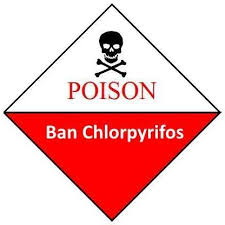 (Beyond Pesticides, July 17, 2018) Last week, closing arguments were made in the 9th Circuit Court of Appeals challenging the U.S. Environmental Protection Agencyâs (EPA) refusal to ban chlorpyrifos, the pesticide science links to a host of neurological impairments in children. A coalition of labor and health organizations represented by Earthjustice asked a panel of three judges to overturn former EPA Administrator Scott Pruittâs decision not to ban chlorpyrifos.
(Beyond Pesticides, July 17, 2018) Last week, closing arguments were made in the 9th Circuit Court of Appeals challenging the U.S. Environmental Protection Agencyâs (EPA) refusal to ban chlorpyrifos, the pesticide science links to a host of neurological impairments in children. A coalition of labor and health organizations represented by Earthjustice asked a panel of three judges to overturn former EPA Administrator Scott Pruittâs decision not to ban chlorpyrifos.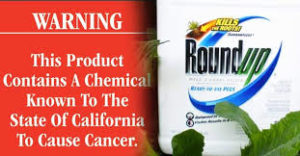 (Beyond Pesticides, July 16, 2018) Legislative Sneak Attacks Continue. Yet another bill has been introduced in Congress to remove accountability from Monsanto/Bayer for its glyphosate herbicide Roundup.™ The so-called âAccurate Labels Actâ (S.3019/H.R.6022) would repeal most, if not all, existing labeling and information disclosure laws adopted by state or local governments, including Californiaâs Safe Drinking Water and Toxic Enforcement Act (Prop 65), which has been responsible for the removal of hundreds of dangerous toxic chemicals, including lead, cadmium, and mercury, from commercial and consumer products nationwide.
(Beyond Pesticides, July 16, 2018) Legislative Sneak Attacks Continue. Yet another bill has been introduced in Congress to remove accountability from Monsanto/Bayer for its glyphosate herbicide Roundup.™ The so-called âAccurate Labels Actâ (S.3019/H.R.6022) would repeal most, if not all, existing labeling and information disclosure laws adopted by state or local governments, including Californiaâs Safe Drinking Water and Toxic Enforcement Act (Prop 65), which has been responsible for the removal of hundreds of dangerous toxic chemicals, including lead, cadmium, and mercury, from commercial and consumer products nationwide. 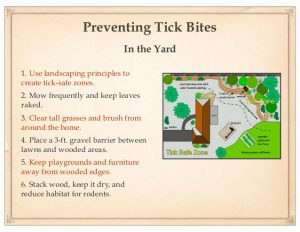 (Beyond Pesticides, July 13, 2018) Earlier this year,
(Beyond Pesticides, July 13, 2018) Earlier this year, 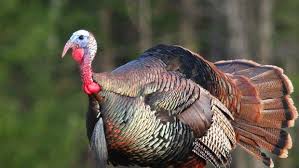 (Beyond Pesticides, July 12, 2018) Neonicotinoid insecticides have become notorious for their
(Beyond Pesticides, July 12, 2018) Neonicotinoid insecticides have become notorious for their  (Beyond Pesticides, July 11, 2018) Ecologically-based farming systems contain far fewer pests and generate much higher profits than their conventional, chemical-based counterparts according to research
(Beyond Pesticides, July 11, 2018) Ecologically-based farming systems contain far fewer pests and generate much higher profits than their conventional, chemical-based counterparts according to research  (Beyond Pesticides, July 10, 2018) Scott Pruitt’s resignation as Administrator of the U.S. Environmental Protection Agency (EPA) took effect Monday under a cloud of ethics investigations and alleged collusion with industry to systematically undermine, dismantle, and reverse critical protections for air, water, and workers. Deputy Administrator Andrew Wheeler will take the helm as Acting Administrator after serving as Deputy Administrator, a position that required Senate confirmation. Mr. Wheeler, a lawyer who worked in the toxics office at EPA under Presidents George H.W. Bush ad Bill Clinton, as an aide to U.S. Senator Jim Inhofe (R-OK) – a denier of climate change – and the Senate Committee on Environment and Public Works (EPW), and as a lobbyist for the coal and chemical industry, told the Washington Post: “[I] would say that the agenda for the agency was set out by President Trump. And Administrator Pruitt has been working to implement that. I will try to work to implement the presidentâs agenda as well. I donât think the overall agenda is going to change that much, because weâre implementing what the president has laid out for the agency. He made several campaign promises that we are working to fulfill here.”
(Beyond Pesticides, July 10, 2018) Scott Pruitt’s resignation as Administrator of the U.S. Environmental Protection Agency (EPA) took effect Monday under a cloud of ethics investigations and alleged collusion with industry to systematically undermine, dismantle, and reverse critical protections for air, water, and workers. Deputy Administrator Andrew Wheeler will take the helm as Acting Administrator after serving as Deputy Administrator, a position that required Senate confirmation. Mr. Wheeler, a lawyer who worked in the toxics office at EPA under Presidents George H.W. Bush ad Bill Clinton, as an aide to U.S. Senator Jim Inhofe (R-OK) – a denier of climate change – and the Senate Committee on Environment and Public Works (EPW), and as a lobbyist for the coal and chemical industry, told the Washington Post: “[I] would say that the agenda for the agency was set out by President Trump. And Administrator Pruitt has been working to implement that. I will try to work to implement the presidentâs agenda as well. I donât think the overall agenda is going to change that much, because weâre implementing what the president has laid out for the agency. He made several campaign promises that we are working to fulfill here.”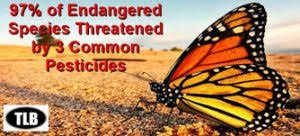 (Beyond Pesticides, July 9, 2018) The Center for Biological Diversity (CBD) is urging the U.S. Fish and Wildlife Service (FWS) to take action to protect 23 wildlife species in the Southeast that are at risk of extinction. Citing deep concerns about unprecedented assaults on the Endangered Species Act (ESA),
(Beyond Pesticides, July 9, 2018)Â The Center for Biological Diversity (CBD) is urging the U.S. Fish and Wildlife Service (FWS) to take action to protect 23 wildlife species in the Southeast that are at risk of extinction. Citing deep concerns about unprecedented assaults on the Endangered Species Act (ESA),  (Beyond Pesticides, July 6, 2018) Two years ago, thirteen bald eagles were found dead on a farm in Maryland. Now the investigation has revealed that these birds died after ingesting the highly toxic pesticide, carbofuran. Carbofuran, whose use has been phased out in the U.S., is so toxic to birds that one granule is all it takes to kill. Irresponsible and illegal use of pesticides is still responsible for primary and secondary poisonings of wildlife, as is the case of these bald eagles.
(Beyond Pesticides, July 6, 2018) Two years ago, thirteen bald eagles were found dead on a farm in Maryland. Now the investigation has revealed that these birds died after ingesting the highly toxic pesticide, carbofuran. Carbofuran, whose use has been phased out in the U.S., is so toxic to birds that one granule is all it takes to kill. Irresponsible and illegal use of pesticides is still responsible for primary and secondary poisonings of wildlife, as is the case of these bald eagles. (Beyond Pesticides, July 5, 2018) With mosquito season in full swing throughout the U.S., land managers and abatement districts can be well served by employing biological controls in the form of fathead minnows (
(Beyond Pesticides, July 5, 2018) With mosquito season in full swing throughout the U.S., land managers and abatement districts can be well served by employing biological controls in the form of fathead minnows (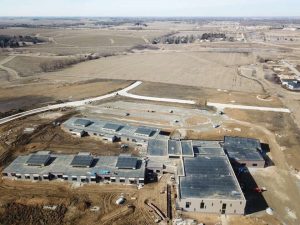
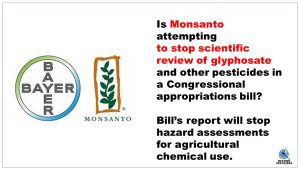 (Beyond Pesticides, July 2, 2018)Â The U.S. House of Representatives is considering
(Beyond Pesticides, July 2, 2018)Â The U.S. House of Representatives is considering 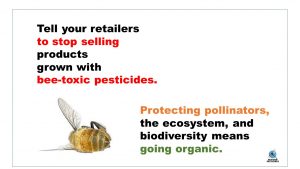 (Beyond Pesticides, June 29, 2018)Â It is widely known that pollinators are in trouble. In light of this,
(Beyond Pesticides, June 29, 2018)Â It is widely known that pollinators are in trouble. In light of this, 
